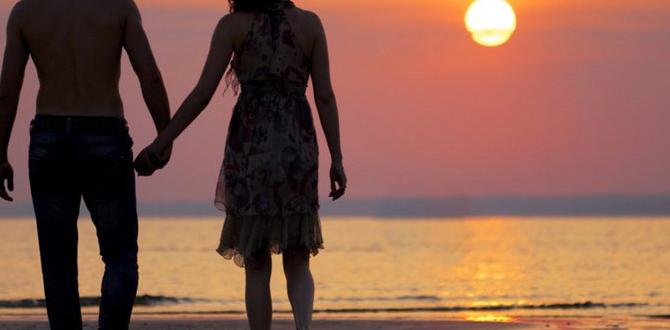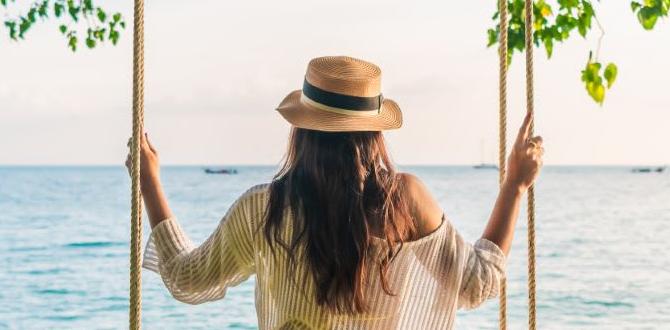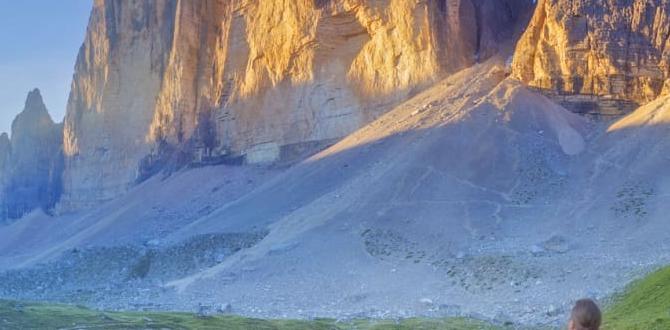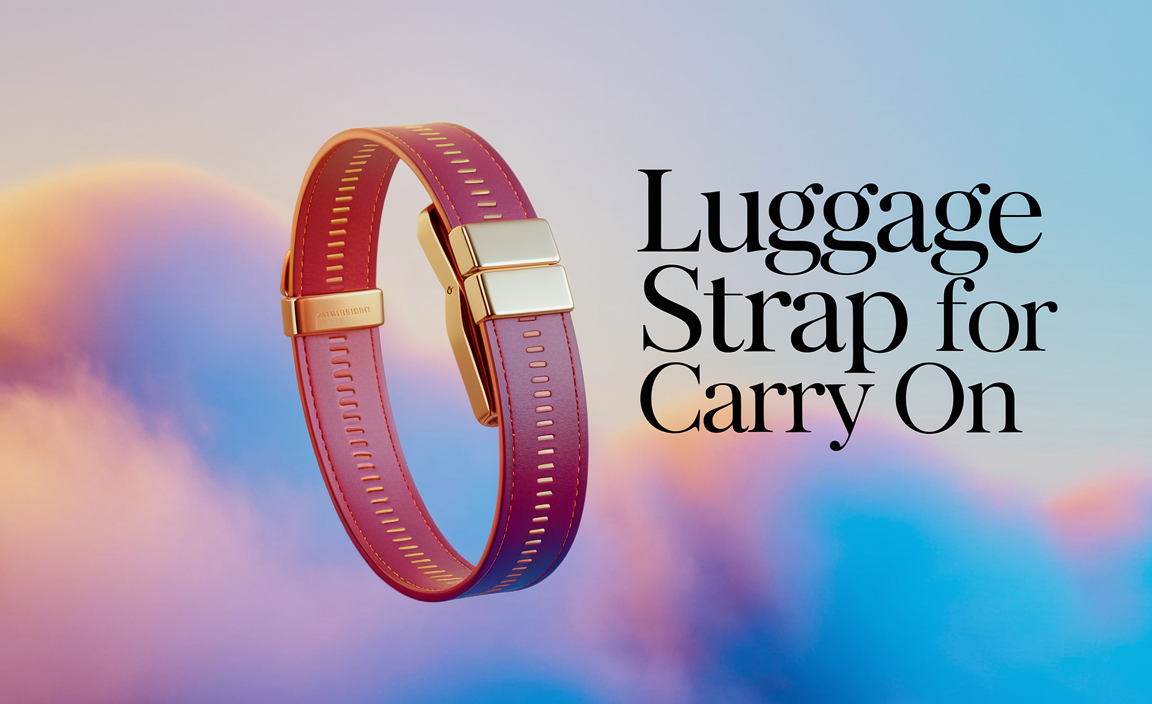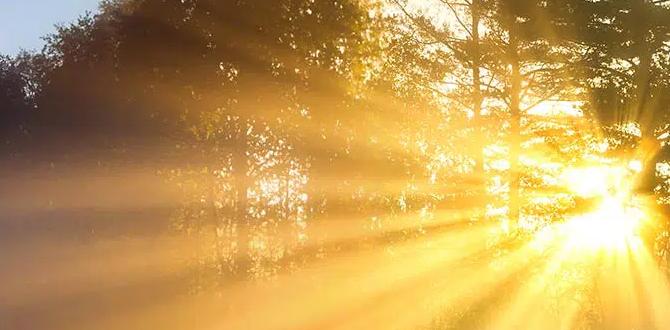Ready for an unforgettable Banff summer adventure? This guide provides essential tips for planning your trip, focusing on maximizing enjoyment, comfort, and preparedness, ensuring a stress-free experience for every traveler.
Planning a summer trip to Banff National Park can feel overwhelming with so many activities and stunning sights to see. Many travelers wonder how to best pack, what to prioritize, and how to ensure their journey is comfortable and memorable, especially if traveling with family or needing specific personal care items. This guide simplifies your Banff summer adventure, offering practical advice from packing essentials to making the most of every breathtaking moment. Get ready to explore the Canadian Rockies with confidence!
Your Essential Banff Summer Trip Itinerary & Planning
Banff in the summer is a paradise of turquoise lakes, towering peaks, and vibrant wildflowers. Visiting during the warmer months means longer days, accessible hiking trails, and a lively park atmosphere. However, it also means planning ahead is key to avoiding crowds and securing the best experiences. This guide will walk you through everything you need to know for a smooth and sensational Banff summer trip.
Why Banff in Summer is a Must-See
Summer unveils Banff in its full glory. The snow melts from the high-elevation trails, revealing lush greenery and access to world-famous viewpoints. The iconic lakes like Lake Louise and Moraine Lake are at their most breathtaking, reflecting the surrounding mountains under clear blue skies. Wildlife sightings are more common, and the town of Banff buzzes with energy, offering a charming base for your explorations.
Best Time to Visit Banff in Summer
The summer season in Banff generally runs from June through September. Each month offers a slightly different experience:
- June: The shoulder season offers fewer crowds, with wildflowers starting to bloom. Trails at lower elevations are generally snow-free, but higher passes might still have snow.
- July & August: These are the peak months. Expect the warmest weather, all trails to be accessible, and the lakes to be their most vibrant blue. This is also when visitor numbers are highest, so booking accommodations and activities well in advance is crucial.
- September: Autumn begins to paint the mountainsides with golden larches (typically late September in higher elevations). The crowds thin out, the weather is crisp and cool, and you might still catch good hiking conditions.
For the best balance of good weather and slightly fewer crowds, late June or early September are excellent choices. However, if vibrant lake colors and full accessibility are your top priorities, July and August are unbeatable.
Booking Your Banff Summer Adventure
Advance booking is your best friend for a Banff summer trip. Here’s what to prioritize:
- Accommodation: Hotels, lodges, and campgrounds in and around Banff book up months, sometimes even a year, in advance. Decide on your preferred location (town of Banff, Lake Louise, Canmore) and book as early as possible.
- Park Pass: You’ll need a Parks Canada Discovery Pass to enter Banff National Park. You can purchase these online in advance or at park gates. Consider an annual pass if you plan to visit multiple national parks within a year. Visit the Parks Canada website for the latest information and purchase options.
- Popular Activities: Tours, shuttle services (especially for Moraine Lake access), and popular attractions like the Banff Gondola can sell out. Book these a few weeks or months ahead, especially if traveling during peak season.
Packing Essentials for Your Banff Summer Trip
Banff’s mountain weather can be unpredictable, even in summer. Layering is key to staying comfortable, whether you’re hiking a strenuous trail or strolling through town. Think versatile clothing that can handle sunshine, wind, and sudden rain showers.
Clothing Layers: The Holy Trinity
Pack adaptable clothing that allows you to adjust to changing temperatures:
- Base Layer: Moisture-wicking tops and bottoms (merino wool or synthetic materials are excellent) to keep you dry and comfortable.
- Mid Layer: An insulating layer like a fleece jacket, down vest, or warm sweater to provide warmth.
- Outer Layer: A waterproof and windproof jacket (a shell jacket) is non-negotiable. It will protect you from rain and wind, crucial for higher elevations and unpredictable mountain weather.
Footwear: Happy Feet, Happy Traveler
Comfortable footwear is paramount for exploring Banff. You’ll be doing a lot of walking, hiking, and exploring.
- Hiking Boots or Trail Shoes: If you plan on hiking, sturdy, broken-in hiking boots or waterproof trail shoes with good ankle support and grip are essential.
- Comfortable Walking Shoes: For exploring the town, easy trails, and sightseeing, a comfortable pair of sneakers or walking shoes will suffice.
- Sandals or Flip-Flops: Useful for relaxing in the evenings or for short walks.
For Comfort and Convenience on the Go
Beyond clothing, think about items that enhance your comfort and preparedness, especially for longer days or specific needs:
- Backpack: A daypack for carrying essentials like water, snacks, extra layers, a first-aid kit, and your camera.
- Reusable Water Bottle: Staying hydrated is important, and refilling stations are available.
- Sun Protection: High SPF sunscreen, a wide-brimmed hat, and sunglasses are vital as the sun is strong at altitude.
- Insect Repellent: Especially important near water bodies or in forested areas during warmer months.
- Camera & Power Bank: You’ll want to capture the stunning scenery! Ensure your devices are charged.
- Binoculars: For spotting wildlife from a safe distance.
- Personal Care Items: Pack your usual toiletries. For those who require them, consider travel-sized or discreet personal care solutions like adult diapers or child diapers. Brands offering comfortable, absorbent, and discreet options can make longer excursions or travel days significantly more stress-free. Look for features like odor control and a secure fit, which are invaluable for maintaining confidence and comfort while exploring. Journey Essentials partners with brands that prioritize these qualities, ensuring you can focus on your adventure, not on discomfort.
Banff Summer Trip Packing List Summary
Here’s a quick checklist to help you pack:
| Category | Essential Items |
|---|---|
| Clothing | Moisture-wicking base layers, fleece/down jacket, waterproof/windproof outer shell, hiking pants/shorts, comfortable pants/jeans, t-shirts, warmer sweater, socks (wool or synthetic). |
| Footwear | Broken-in hiking boots/trail shoes, comfortable walking shoes, sandals. |
| Accessories | Daypack, reusable water bottle, sun hat, sunglasses, sunscreen, insect repellent, first-aid kit, camera, power bank, binoculars. |
| Personal Care | Toiletries, any personal necessities (e.g., travel-friendly adult or child diapers). |
| Documents & Money | ID, credit cards, cash, park pass, booking confirmations. |
Must-Do Summer Adventures in Banff
Banff offers activities for every type of traveler, from the avid hiker to the scenic cruiser. Here are some unmissable summer experiences:
1. Explore the Iconic Lakes
The lakes of Banff are its crown jewels. Plan your visit strategically to avoid peak crowds.
- Lake Louise: Famous for its iconic view of the Victoria Glacier and emerald waters. Rent a canoe, walk the shoreline path, or hike to Lake Agnes Tea House.
- Moraine Lake: Known for its vibrant turquoise color, framed by the Valley of the Ten Peaks. Access to Moraine Lake is often restricted to Parks Canada shuttles or Roam Public Transit due to popular demand and conservation efforts. Book shuttle tickets well in advance.
- Peyto Lake: Offers a breathtaking high-altitude viewpoint accessible via a short walk from the parking lot. Shaped like a wolf, its color is mesmerizing.
- Emerald Lake (in nearby Yoho National Park): Often overlooked but equally stunning, offering a calmer atmosphere and beautiful reflections.
2. Hike Among the Peaks
Banff boasts trails for all fitness levels. Remember to check trail conditions before heading out, especially early in the season.
- Easy: Johnston Canyon (boardwalk trail to waterfalls), Lake Louise Lakeshore Trail, Moraine Lake Lakeshore Trail.
- Moderate: Larch Valley / Sentinel Pass (especially stunning in September), Plain of Six Glaciers Trail (from Lake Louise), Sulphur Mountain Trail (or take the gondola up).
- Difficult: Sentinel Pass via Paradise Valley, Cascade Mountain.
Always carry bear spray and know how to use it when hiking in Banff. You can rent bear spray in town.
3. Scenic Drives and Viewpoints
Even if you’re not a hiker, you can soak in Banff’s beauty through its scenic roads:
- Banff Parkways (Highway 1 & 1A): Connect Banff and Jasper, offering stunning vistas at every turn. Stop at pull-offs like Bow Lake and the Columbia Icefield.
- Moraine Lake Road (seasonal access): Offers unparalleled views of the Valley of the Ten Peaks.
- Lake Minnewanka Loop: A scenic drive with opportunities for wildlife viewing and stops at several lakes.
4. Wildlife Viewing
Banff is home to elk, deer, bighorn sheep, mountain goats, bears (black and grizzly), and more. The best times to spot them are dawn and dusk. Always maintain a safe and respectful distance – never feed wildlife.
Prime viewing areas include:
- The road to Lake Minnewanka.
- The Bow Valley Parkway.
- Near the town of Banff, especially in meadows.
5. Explore the Town of Banff
Banff Avenue is the heart of the town, lined with shops, restaurants, and galleries. Don’t miss:
- Banff Gondola: Ride to the summit of Sulphur Mountain for panoramic views and boardwalks.
- Banff Upper Hot Springs: Relax in the natural mineral hot springs.
- Cave and Basin National Historic Site: The birthplace of Canada’s National Parks.
6. Adventure Activities
For the thrill-seekers:
- White Water Rafting: Experience the thrill of the Kicking Horse River (nearby in Yoho NP) or the Bow River.
- Canoeing/Kayaking: Rent a canoe on Lake Louise, Moraine Lake, or Vermilion Lakes.
- Rock Climbing & Via Ferrata: Guided experiences are available for all levels.
Navigating Banff: Transportation Tips
Getting around Banff can be a challenge during the busy summer months. Consider these options:
1. Shuttle Services and Public Transit
These are lifesavers, especially for accessing popular lakes with limited parking.
- Roam Transit: Provides local bus service within the town of Banff and to nearby attractions like Lake Minnewanka and Johnson Lake. They also offer a special service to Lake Louise and Moraine Lake during peak season. Book tickets in advance!
- Parks Canada Shuttle: Shuttle services operate to Moraine Lake and Lake Louise from designated parking lots. This is often the easiest way to access Moraine Lake.
- Private Shuttle Operators: Several companies offer transport services to various popular destinations.
2. Driving and Parking
Driving your own vehicle offers flexibility, but be prepared for parking challenges, especially at Lake Louise and Moraine Lake. Parking lots can fill by early morning.
- Park Early: Arrive at popular spots before 8 AM to secure parking.
- Consider Park-and-Ride: Utilize designated parking lots that connect to shuttle services.
- Banff Park & Ride: Located at the Banff Park Gate, this is a common hub for accessing shuttles to Lake Louise and Moraine Lake.
3. Biking
Banff has a growing network of paved and unpaved trails. Renting a bike can be a fantastic way to explore the town and the shores of certain lakes.
Tips for Traveling with Children and Personal Care Needs
Traveling with children or managing personal care needs like adult or child diapers requires extra preparation, but it doesn’t have to be stressful. The key is organization and ensuring you have reliable supplies.
Traveling with Children
Banff is wonderfully family-friendly. Many trails are manageable for little legs, and the sheer wonder of the mountains can be captivating for kids.
- Snacks and Drinks: Always pack more than you think you’ll need.
- Child Carrier: If hiking, a comfortable child carrier backpack is invaluable.
- Pacing: Don’t overschedule. Allow for downtime and spontaneous stops.
- Child Diapers: Pack an ample supply of child diapers, including overnight options for peace of mind. Consider brands that are highly absorbent and comfortable for long days exploring. Having a discreet, change-friendly bag for used diapers is also helpful.
Managing Adult Diapers or Personal Care Needs
For travelers who require adult diapers or other personal care products, comfort, absorbency, and discretion are paramount for enjoying a trip to Banff. Long days of sightseeing, hiking, or travel can be far more manageable with the right products.
- Pre-Trip Planning: Research brands that offer high absorbency, odor control, and a discreet fit. Many manufacturers offer sample packs, allowing you to test products before your trip.
- Packing Strategically: Pack enough supplies for your entire trip, plus a few extras, to avoid any last-minute searches. Consider using the vacuum-seal bags to save space.
- Discreet Carrying: A well-designed travel bag or a dedicated pouch can help you carry spare products and wipes discreetly throughout the day.
- Comfort is Key: When choosing products, prioritize those made with breathable materials that help prevent skin irritation, especially important in varying mountain climates.
Journey Essentials understands these needs and aims to highlight products that provide dignity, comfort, and reliability, allowing you to focus on the adventure and not worry about your personal care needs.
Budgeting for Your Banff Summer Trip
Banff can be an expensive destination, but there are ways to manage your budget:
- Accommodation: Staying outside the immediate town of Banff (e.g., Canmore) can sometimes offer more affordable options. Camping is the most budget-friendly if you can book a spot.
- Food: Utilize grocery stores in Banff for picnic lunches and some meals. Enjoying a few meals at local restaurants is a must, but balance them with self-catered options.
- Activities: While many popular attractions have fees, there are plenty of free activities. Hiking, exploring viewpoints, and strolling through town cost nothing but your time and energy. Focus on a few paid activities that are high on your priority list.
- Transportation: Utilizing shuttle services and public transit instead of relying on your own vehicle for every outing can save on gas and parking fees.
Frequently Asked Questions
- Is Banff crowded in the summer?
- Yes, July and August are peak season, making Banff very crowded. June and September see fewer visitors, offering a more relaxed experience, though some higher trails might still have snow or be transitioning to fall colors.
- What is the weather like in Banff in the summer?
- Summer weather is generally pleasant, with daytime temperatures averaging 20-25°C (68-77°F). However, mountain weather can change rapidly. Expect cool evenings and the possibility of rain or even snow at higher elevations, even in July.
- Do I need a car to get around Banff?
- While a car offers flexibility, it’s not essential and can be a hassle due to parking. Parks Canada shuttles, Roam Transit, and private shuttles are excellent alternatives for accessing popular sites like Lake Louise and Moraine Lake.
- What are the must-see attractions in Banff?
- The top attractions include Lake Louise, Moraine Lake, Banff Gondola, Sulphur Mountain, Johnston Canyon, and the scenic drives along Highway 1 and the Bow Valley Parkway. Wildlife viewing is also a major draw.
- Is it safe to hike in Banff?
- Hiking in Banff is generally safe, provided you are prepared. Always check trail conditions, be aware of wildlife (carry bear spray and know how to use it), stay on marked trails, and inform someone of your hiking plans. Weather can change quickly, so be prepared for varying conditions.
- How should I book accommodations in Banff for summer?
- Book accommodations as early as possible, ideally 6-12 months in advance, especially for travel in July and August. Popular options include hotels, lodges, vacation rentals, and campgrounds. Online travel agencies, hotel websites, and Parks Canada’s camping reservation system are the best places to look.

